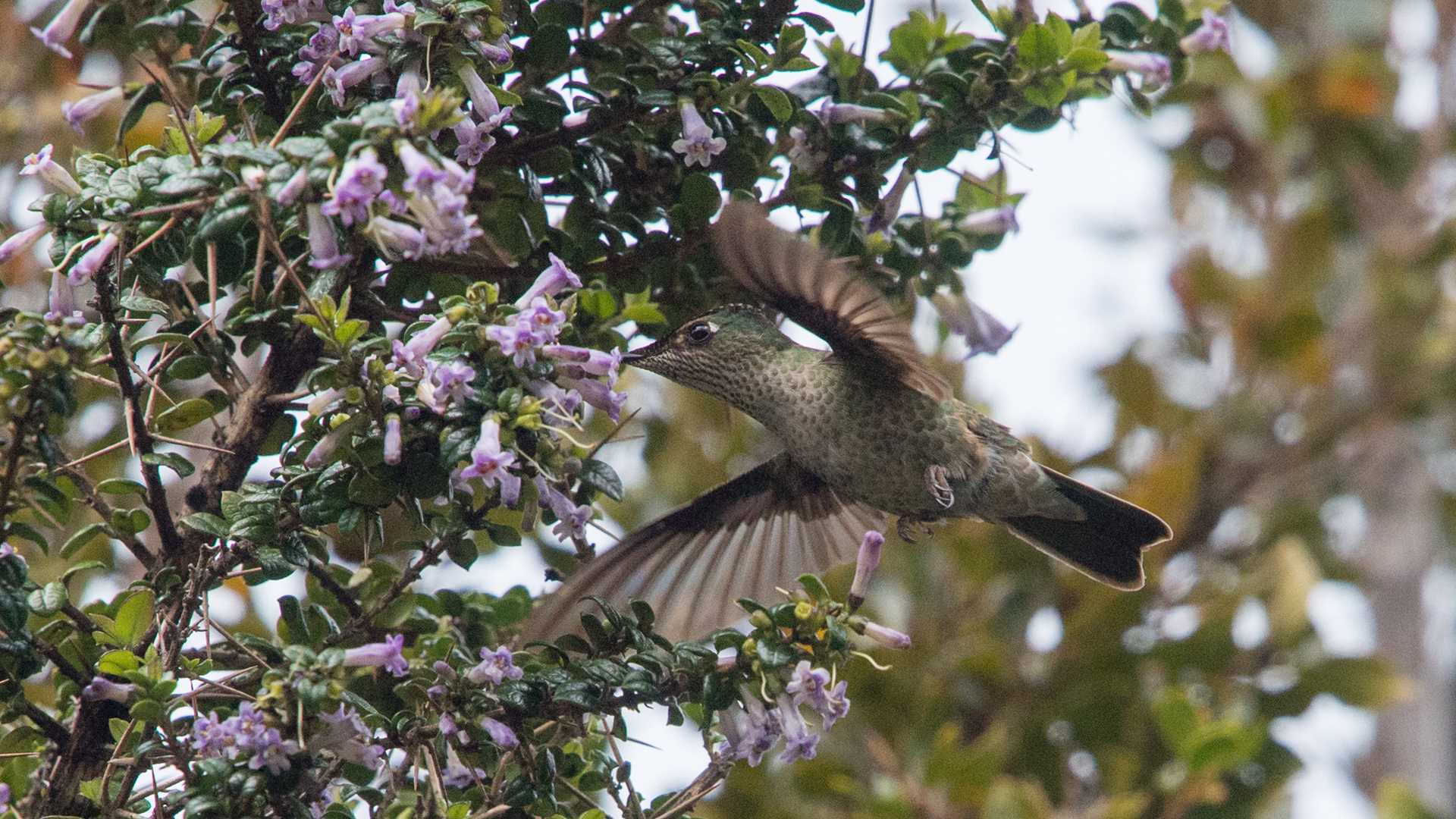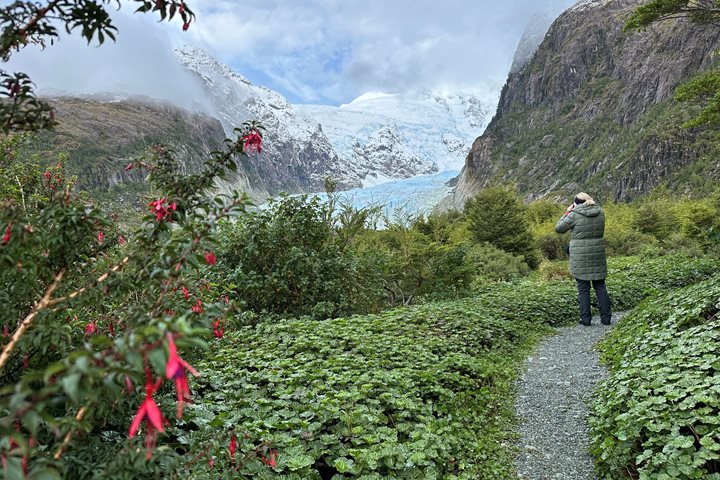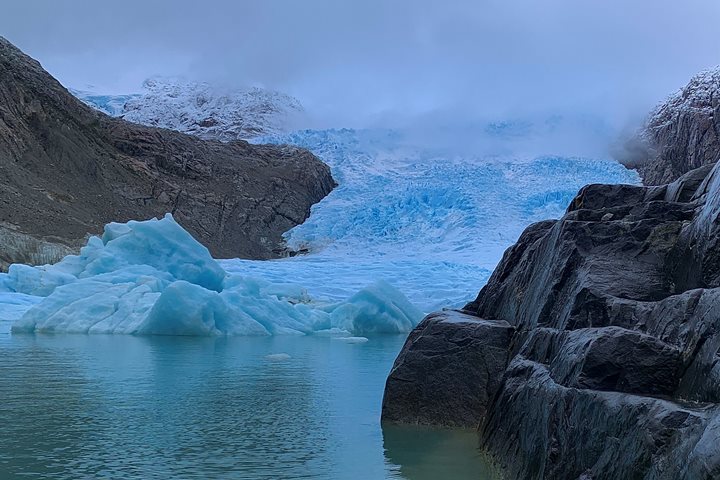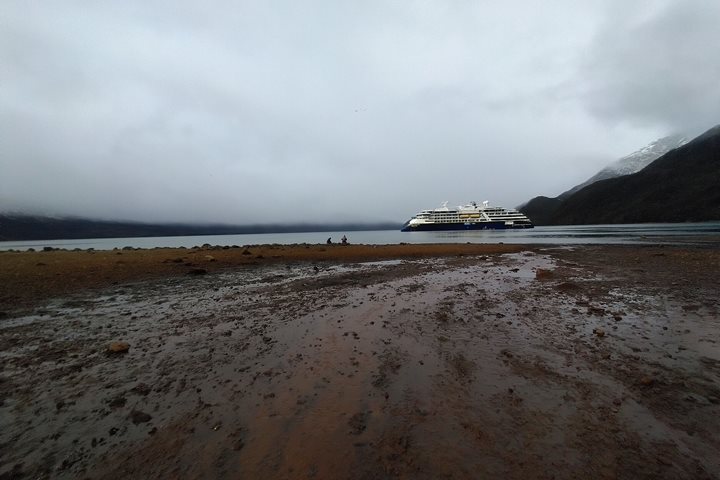The conditions today are so very very different to those encountered yesterday. The skies are a menacing gray and the winds, from the northwest are funneling straight down Gonzalo Fjord. This in no way detracts from the magnificent scenery that slowly emerges with the first light. Steep mountain sides clad in dense vegetation, mostly made up of trees and occasional patches of ferns. The swirling gray low clouds complete the mood. The winds are intense, blowing a constant 35 knots and gusts probably exceeding 40 knots. We head towards our planned morning destination but it is very evident that this is not the weather to be out in our Zodiacs and so plan “B” is implemented. The ship turns around and heads north for a better protected fjord. Along the way a number of birds and mammals are sighted and among these it is worth mentioning the beautiful red-legged cormorants and the Pinzako storm petrel! There is great excitement with the sighting of this small pelagic bird which has only recently been described and which inhabits the waters we are currently sailing in.
Once in the Comao Passage we head for the narrow entrance of Quintupeo Fjord but the winds are funneling straight in so it is decided t head deep into Comao Fjord where conditions should be a lot calmer. It was in Quintupeo Fjord that the famous battleship Dresden took refuge for repairs and refueling during the First World War. To be able to do so she was aided by local residents from Puerto Montt. She finally sailed out to her final destination, the Juan Fernández Islands where she was scuttled after the battle of Coronel.
By this stage the winds have picked up even further and from the warmth and comfort of the ship we marvel at the streaked sea and poor visibility caused by the downpour outside. It is an impressive sight. Off in the distance ribbons of white water cascading down the steep mountainside can be seen.
After lunch we have indeed found very quiet conditions in Porcelana Cove and once our scouting party report back that we can go ashore we eagerly don our foul weather gear (just in case) and get ready to go ashore. We learn that there is an added bonus of some hot water springs not far away at the end of the walk, so those disposed to try this out also stuff a towel and swim wear into our rucsacs.
We land on a small pebbly beach and just a small distance away there are a number of trees laden with bright yellow flowers. As we draw closer we hear a lot of bird chatter brought about by many hummingbirds feeding on the nectar provided by the flowers. They are all green backed firecrowns. Off in the distance the inimitable guttural sounds from the chucao tapaculo can also be heard. These birds, that rarely fly, live in the undergrowth of these lush forests.
The walk leads across a little meadow and up passed some buildings and then into the temperate rainforest. At times the path gets very muddy. On one side the waters of a fast moving river can be heard and all about us ferns, some huge, and mosses can be appreciated. The path then takes us to a series of ponds, created by small loose stone dams, and the steam rising from them let us know that we are in the area of fresh water springs. The waters are deliciously warm.
Once back down on the landing area we wander over to a huge tree trunk, with part of its root system still attached and marvel at the rich red wood that is exposed. This is an alerce cypress and it has tumbled down and then got caught up in fast moving rivers before floating into the fjord. The locals then hauled it ashore and are in the process of cutting it into planks, for the wood highly prized. Indeed we all had opportunities of seeing the cladding and roofing tiles on many houses on Chiloé Island the day before. However over exploitation means that today the alerce cypress has been declared a national monument in Chile and is totally protected.
We are all so grateful that we were able to experience this wonderful plan “B”. After all we are on an expedition cruise and we are all ready for the unexpected.









